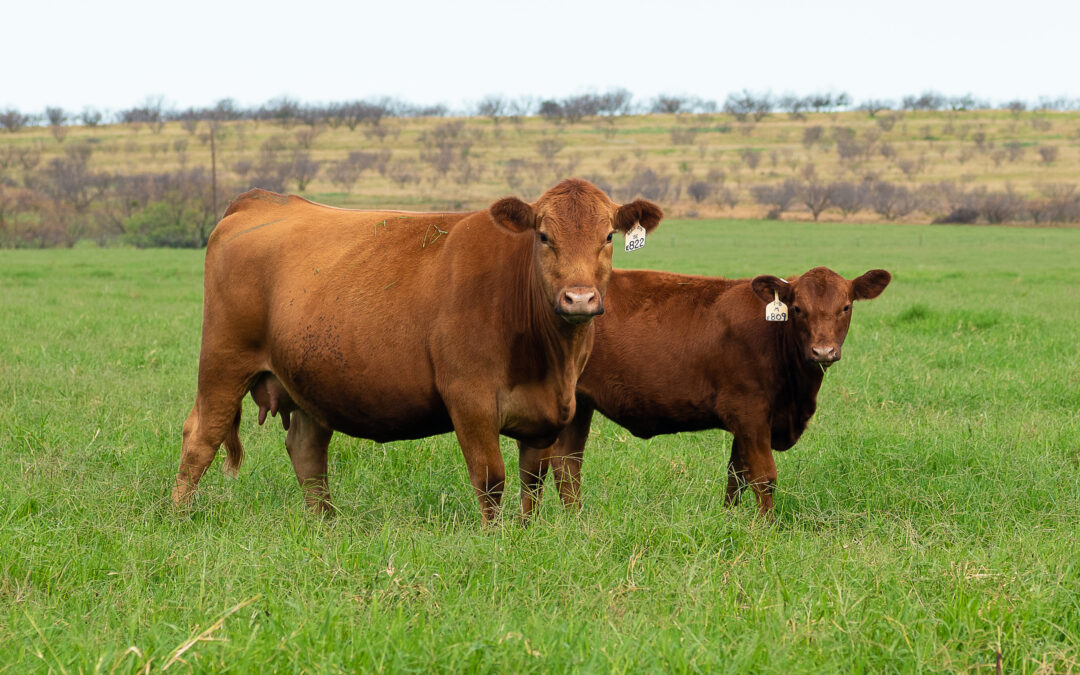By: Cody Hixon, M.S.
Nutritionist, Livestock Nutrition Center
As spring arrives across the Southern and Central Plains, so does the presence of “weeds” in pastures. A “weed” can be defined as any species of plant that is undesirable for pasture health or animal consumption and production. Research by Texas A&M University has observed two to five pounds of forage loss in pastures for every one pound of weed production for most common weed species. In addition, most weeds contain higher concentrations of nitrogen, phosphorous, and potassium as compared to the grass forage species they are competing with. Therefore, as weed populations in pastures increase, the carrying capacity of that land is reduced due to reduced grazeable forage dry matter production and reduced forage nutrient content.
WAYS TO CONTROL WEEDS
Maintain Healthy Stocking Rates
- Continuously overgrazing a pasture leads to poor forage stands, leading to a pasture becoming susceptible to weed infestations. The best long-term method to control weeds is to stock pastures according to their forage growth potential.
Grazing Management
- Not all “weeds” are bad, and in fact, some can be very productive when grazed appropriately.
- For example, although fescue and perennial ryegrass can reduce soil moisture and use vital nutrients needed for warm-season forage growth if they are grazed intensively during their vegetative periods in the early spring they can provide an excellent source of low-cost nutrition to grazing cattle. In addition, intensively grazing johnsongrass while it is immature is an excellent way to minimize johnsongrass stands in pastures.
Prescribed Burns
- Under certain conditions, the use of prescribed burns can be a very effective method for eliminating woody species of weeds from pastures.
Herbicide Application Tips
- Early Application is Key – For herbicides to work well, they must be applied when weed is immature and growing. Application on mature (flowered) plants is often much less effective.
- Use the Correct Chemical – Before application, determine which weed species you are desiring to control and ensure that the herbicide you purchase is effective against them.
- Ensure Correct Application – It is important to read and follow the application rates listed on the label. In addition, it is important to calibrate your sprayer to ensure you are getting the correct amount of herbicide per acre.
- Apply at Appropriate Times – Weather conditions such as drought, heavy rains, or wind can greatly reduce the effectiveness of applied herbicides. Be sure to time your application when it will have its greatest return.
- Reap the Returns – Research conducted by Texas A&M University has shown that the correct application of herbicides to control weeds will increase forage production in pastures by 3.0 – 3.5 times that of pastures not treated with herbicide. This increase in forage production would lead
- to an equivalent increase in animal stocking rate, which in turn can lead to greater profitability potential per acre of land.
Now is the time to make a plan and get ahead of your weeds!
“Weed and Brush Management in Texas” 2013. Redmon, L.A., Baumann, P.A., and Corriher-Olson, V. Texas AgriLife Extension. SCS-2013-14.

Recent Comments